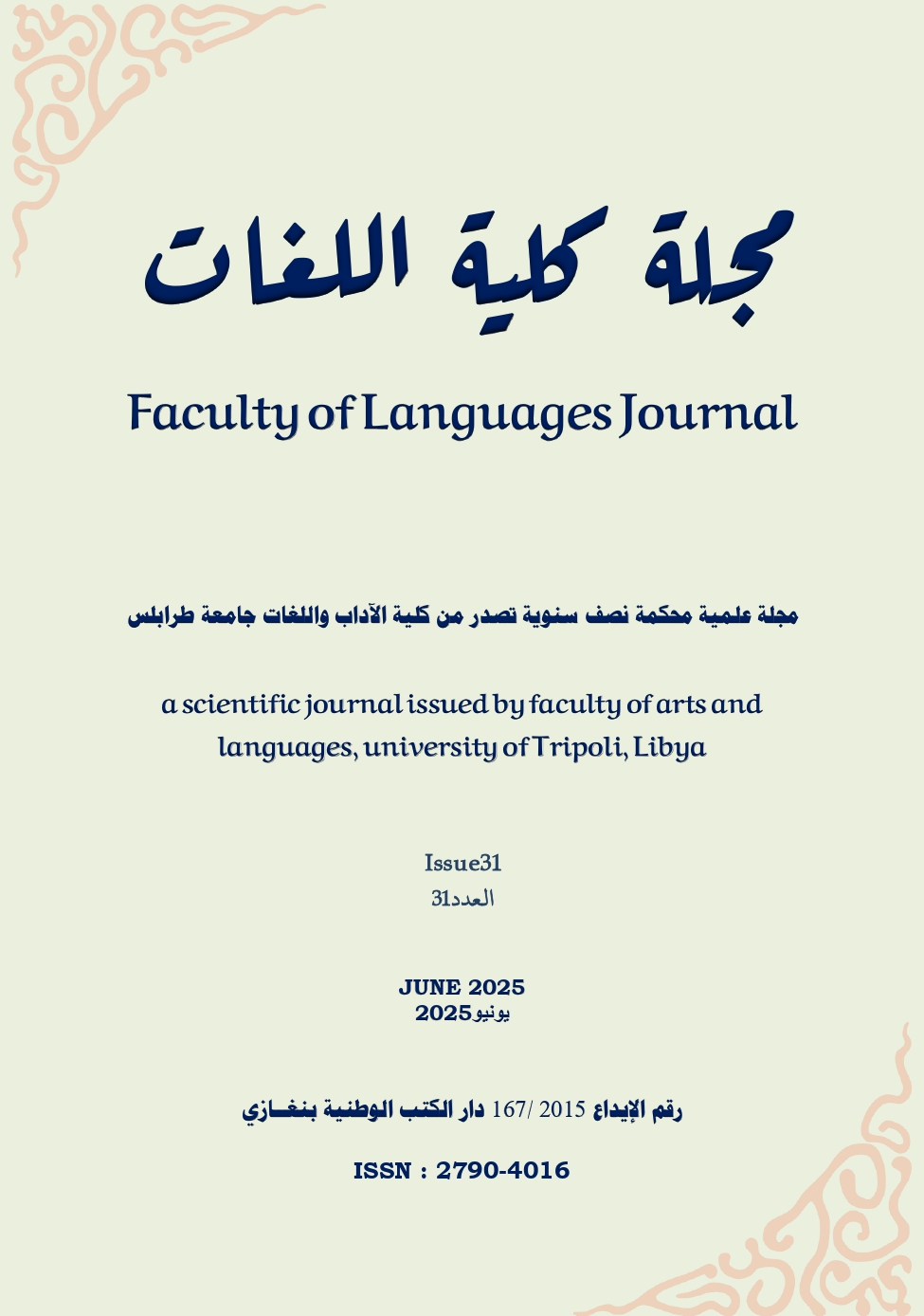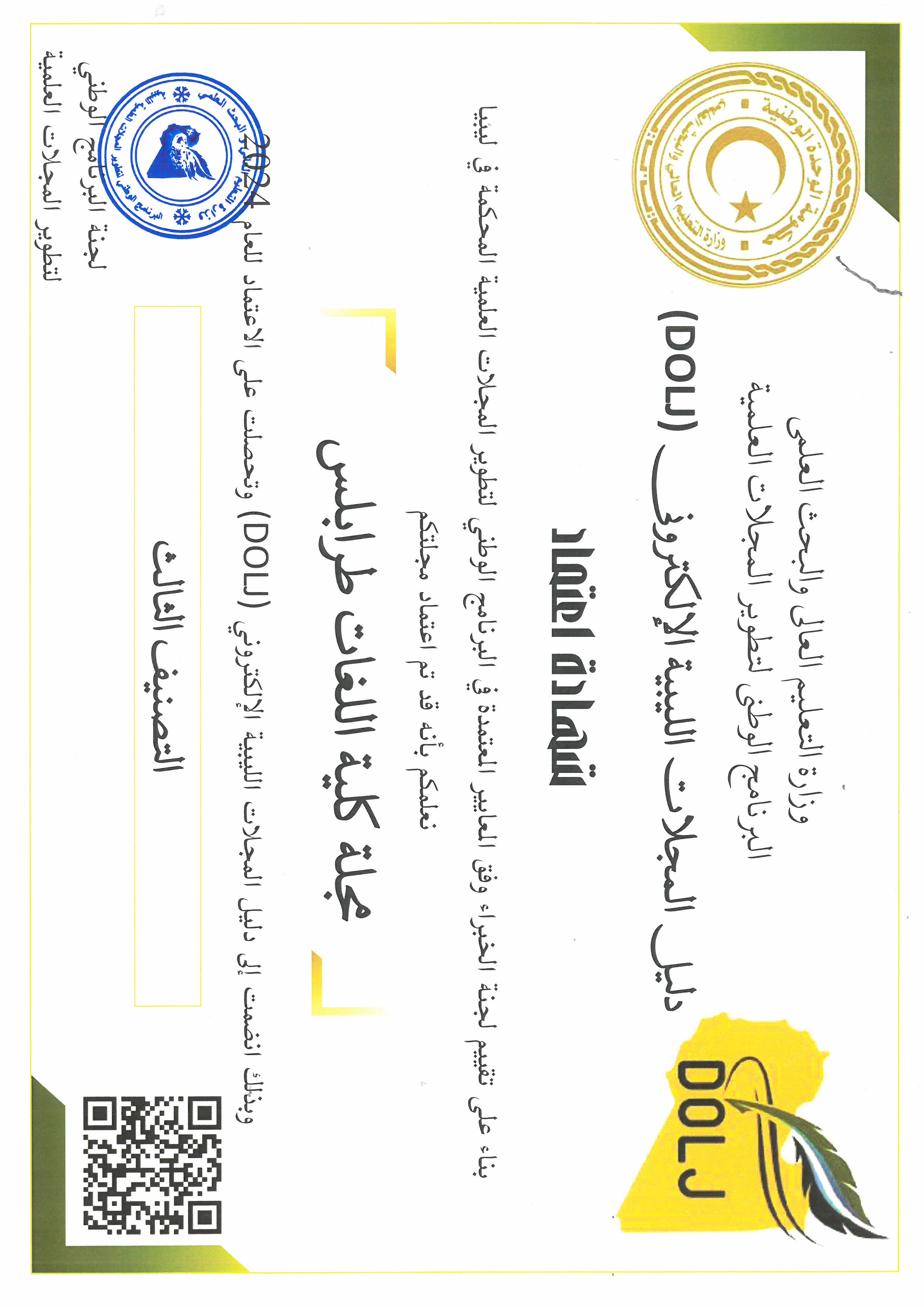The Influence of Anachronism in Showing the Gap Between Anglo-American and Arab Literary Canons
الكلمات المفتاحية:
المفارقة التاريخية، التسلسل الزمني، الثقافةالملخص
تهدف الدراسة إلى استكشاف دور استخدام المفارقة التاريخية في قصة "شهرزاد الثانية بعد الالف" لإدجار آلان بو، وقصة “الليالي العربية الحديثة" لروبرت لويس ستيفنسون. باستخدام المنهج النوعي، تسعى الدراسة الى توضيح الكيفية التي اعتمدها هذان الكاتبان في منح قصصهما صور وأبعاد وإيحاءات جديدة. من خلال التحليل، تكشف الدراسة كيف يعكس هذان العملان العناصر الثقافية والزمنية والتاريخية للثقافة المستهدفة. بالإضافة الى ذلك، تكشف الطرق التي تمت بها إعادة كتابة النص المصدر وتكييفها لتلبية متطلبات الأوقات والثقافات والمناطق الجديدة. وتختتم الدراسة إلى أن كلا الكاتبين قد استخدما المفارقة التاريخية لمعالجة قضايا وموضوعات تعكس عصرهما في قالب أدبي تقليدي
المراجع
Al-Adawi, M. K. (Ed.). (1988). Kitab alf layla wa layla. The Libraries of Columbia University.
Atack, C., Rood, T., & Phillips, T. (2020). Anachronism and antiquity. Bloomsbury Academic.
Davies, S. (2003). Empiricism and history. Red Globe Press.
Gray, W. (2004). Robert Louis Stevenson: A literary life (Literary lives). Palgrave Macmillan
Hutcheon, L. (2006). A theory of adaptation. Routledge.
Lyons, M. C. (Trans). (2008a). The Arabian nights: Tales of 1001 nights (Vol. 1). Penguin.
Lyons, M. C. (Trans). (2008b). The Arabian nights: Tales of 1001 nights (Vol. 2). Penguin.
Poe, E. A. (2013). The thousand and second tale of Scheherazade. Create Space Independent Publishing Platform.
Sanders, J. (2006). Adaptation and appropriation: The new critical idiom. Routledge.
Scott, W. (1820). Ivanhoe: A romance. Archibald Constable.
Stevenson, R. L. (2019). The new Arabian nights. Maven Books.
Tambling, J. (2010). On anachronism. Manchester University Press.
Atkins, B. (2020). Lady Mesmer circumnavigates the scientific imagination in Poe’s “The thousand-and-second tale of Scheherazade.” In I. Roberts (Ed.), Futures of the past: An anthology of science fiction stories from the 19th and early 20th centuries, with critical essays. McFarland

التنزيلات
منشور
كيفية الاقتباس
إصدار
القسم
الرخصة
الحقوق الفكرية (c) 2025 Faculty of Languages Journal-Tripoli-Libya

هذا العمل مرخص بموجب Creative Commons Attribution 4.0 International License.
 https://orcid.org/0009-0002-8251-5878
https://orcid.org/0009-0002-8251-5878




